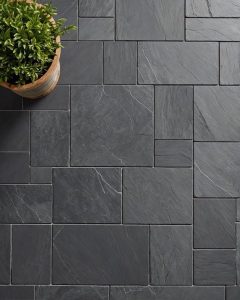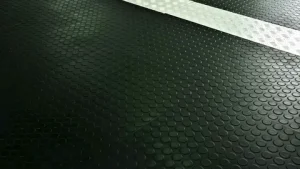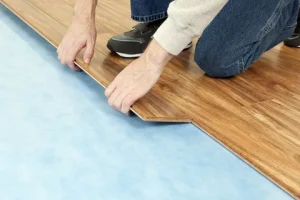Choosing the best outdoor flooring is important for creating a stylish, comfortable, and long-lasting space. The right flooring not only adds beauty to patios, gardens, and balconies but also provides durability against weather and daily use.
You’re staring at your plain concrete patio feeling completely defeated. That costly outdoor furniture looks odd on cracked, stained flooring. Your beautiful backyard design does not match with that rough surface under everything. If you have struggled to create nice outdoor spaces, you are not alone here.
But here’s what I learned after many patio failures: picking outdoor flooring is not hard at all. You only need simple material knowledge and clear installation tips. This guide shows you tested options turning plain outdoor areas into useful and inviting living spaces.
Why Your Outdoor Floor Selection Changes Everything
Your outdoor flooring is the base linking your full backyard design together. It holds furniture pieces while marking different activity zones well. Think of your flooring as the stage where all outdoor hosting happens.
When you make this choice right, results show fast. Your patio feels like an extension of your indoor living area. Furniture looks planned rather than scattered around. The whole outdoor space feels complete and very inviting.
But choose poorly, and your backyard feels cheap and broken forever. Nothing looks right no matter how costly your outdoor furniture was.
How Temperature and Moisture Influence Flooring Choices
Outdoor flooring faces issues indoor surfaces never face. Rain, snow, UV rays, and temperature shifts test every material often. Your flooring must handle these conditions while staying strong and safe.
Freeze-thaw cycles crack weak materials within months. UV rays fade colors and weaken surface strength with time. Heavy rain needs good drainage to stop water damage. Heat and cold cause stress from constant expansion and shrinkage.
This means durability beats upfront cost every time. Cheap materials turn costly when you replace them again and again.
Five Reliable Outdoor Flooring Ideas for Any Space
Some outdoor flooring choices stay strong and useful always:
- Composite Decking + Any Outdoor Space: Brings durable style perfect for modern patios and pool areas.
- Natural Stone Pavers + Traditional Patios: Gives classic charm and long appeal in formal outdoor hosting areas.
- Porcelain Tiles + Contemporary Designs: Offers sleek looks with weather resistance across all seasons.
- Concrete Pavers + Budget Projects: Delivers value and design choice for large patio builds at low cost.
- Rubber Flooring + Safet:y Zones Creates soft, non-slip surfaces ideal for pool decks and play spots.
How to Choose Best Outdoor Flooring for Every Activity
Your outdoor space use directly drives material choice for best results. Hosting areas need other options than quiet garden paths.
High-Traffic Hosting Zones
Pick strong materials that handle crowds and moving furniture. Stone pavers, composite decking, or porcelain tiles fit well for these uses.
Pool and Water Areas
Focus on slip-resistance and quick drying above all else. Textured concrete, rubber flooring, or treated wood handle water safely.
Quiet Rest Spaces
Choose comfort and natural charm for peaceful corners. Wood decking, flagstone, or styled concrete build calm settings well.
Transition Zones
Use flooring that blends indoor and outdoor areas smoothly. Matching interior and exterior surfaces makes flow seamless.
How Weather Can Make or Break Your Flooring Choice
Materials react very differently in changing seasons and climates. That summer build might crack during cold winters fast.
Always study local climate impact on each material first. Note temperature swings, rain levels, and sunlight through the year. Check product warranties for specific weather too. Take photos of current surfaces in all seasons. Many issues only show during harsh conditions, not in mild weather.
How Room Size and Layout Affect Flooring Material
Small patios gain most from bigger format materials. These cut down clutter and make spaces look larger.
Big outdoor areas allow mix of styles and complex designs. These split zones and add interest across large spaces.
But size matters beyond material pick alone. Good setup and drainage make any flooring last longer and perform better.
Mistakes to Avoid When Choosing Outdoor Flooring
You may ruin your project without knowing it. Here are common errors homeowners repeat:
- Ignoring Drainage Needs: Bad drainage ruins even top materials fast. Water must drain off surfaces well. Pooled water stains, cracks, and adds risks.
- Skipping Skilled Installation: DIY work often fails from poor prep. Base work, leveling, and sealing need skill and tools for lasting jobs.
- Choosing Looks Over Use: Pretty materials that fail in your climate become costly mistakes. Pick strength and weather safety before looks.
- Forgetting Care Needs: Some materials need sealing, cleaning, or treatment often. Add long-term care costs and effort in your plan.
Budget-Friendly Flooring Tips That Deliver Results
You do not need endless money for pro outdoor results. Stamped concrete gives style and use at fair costs.
Concrete pavers give design choice while staying low-budget. Mix sizes and shades for custom looks without high costs.
Partial installs help when money is short too. Start with seating areas, then add more as you can. Try DIY-ready picks like interlock tiles or rubber mats. These need few tools and give fast results.
Flooring Installation Rules by Material Type
- Natural Stone Projects: Need strong base prep and sealing. Uneven pieces need skilled setup for safe use.
- Composite Decking Systems: Need airflow and gap spacing. Follow product rules to keep warranties valid.
- Concrete Builds: Need cure time and good weather. Poor timing leads to lasting issues later.
- Tile Installs: Need water-safe bases and right glue. Outdoor use needs other products than indoor tile jobs.
How to Choose Outdoor Flooring Without Stress
When too many flooring choices confuse you, ask these key questions:
Does this material hold up in my weather? Will it support my outdoor use and furniture? Can I pay for setup and upkeep costs?
If all answers are yes, you found your flooring match.
How Pre-Testing Protects Your Outdoor Flooring Budget
Always test samples before big buys. Place them outside and check in all weather. Colors and textures look very different outdoors.
Keep samples through at least one weather change. What looks right first may fail after rain or heat. Visit finished projects nearby too. Seeing real use shows results better than store displays.
Seasonal Factors That Impact Flooring Installation
Spring installs let you enjoy warm months fully. Materials settle before winter arrives.
Summer jobs face heat and UV risks. Some materials cannot be set in high heat.
Fall work sets up spaces for next year. Concrete cures better in cool steady temps.
Winter is best for planning and booking. Top products and skilled workers book early.
Last Words on Choosing and Installing Outdoor Floors
Picking outdoor flooring is not about strict design rules. It is about knowing how weather, use, and materials work together. Start with one must-have, like slip safety, color, or budget. Build around it with these tips as your plan. With time, you will feel sure about material choice. Trust your research and follow good install steps always.
FAQ
What’s the most durable outdoor flooring option?
Stone pavers and composite decking last long with little care in most areas.
Can I install outdoor flooring myself?
Simple picks like interlock tiles work DIY. Stone or concrete need skilled setup.
How do I prevent outdoor flooring from fading?
Pick UV-safe materials and use sealers often. Shade from umbrellas or covers helps too.
What’s the best flooring for pool areas?
Textured concrete, rubber, or treated composite stay safe and water-ready near pools.
How long does outdoor flooring typically last?
Strong materials with proper setup last 15 to 25 years or more. Care level changes lifespan a lot.








